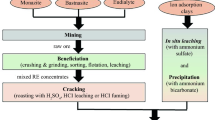Abstract
In the autumn of 2012, the Japan Atomic Energy Agency (JAEA) launched a new research project named F-TRACE (Long-Term Assessment of Transport of Radioactive Contaminant in the Environment of Fukushima). The aims of this project are to develop a system for prediction of radiation exposure, taking into consideration the transport, deposition, and remobilization behavior of radiocaesium (RCs) from the highest contaminated mountain forests, down through the biosphere, before deposition in a number of different aquatic systems. Especially, it is important to understand balances of suspended and deposited particles and RCs inventory in inflow water, discharge water and bottom sediments of an upland reservoir. In this paper, we describe current research activities performed by JAEA at the Ogi Reservoir, Fukushima prefecture, Japan.
According to our analyses the specific sediment yield and the average rate of storage capacity loss at the Ogi Reservoir are 210 m3 km−2 year−1 and 0.15 % year−1, respectively. The vertical distribution of RCs exhibits clear peaks at several sites in the reservoir formed by deposition of eroded soil particles from the catchment that were contaminated by accident fallout. Above the depth of each of the RCs peaks, the distribution of RCs was found to be variable with depth, with concentrations ranging over five orders of magnitude for a single core. The peaks in the sedimentation profiles are probably formed from eroded soil particles entering the reservoir from the surrounding contaminated watershed (most probably during storm events). Results from grain size analyses suggest that contaminated fine sediment tends to be deposited thickly within deeper parts of the reservoir. In addition, above the depth of RCs peaks at these deeper sites, the concentration of RCs approximately increased or decreased as the proportion of fine sediments increased or decreased. However, some fine particles are possibly discharged downstream during operational releases from the dam.
Similar content being viewed by others
References
M. Chino, H. Nakayama, H. Nagai, H. Terada, G. Katata and H. Yamazawa, J. Nuc. Sci. & Tec., 48 (2011).
T. Fujiwara, T. Saito, Y. Muroya, H. Sawahata, Y. Yamashita, S. Nagasaki, K. Okamoto, H. Takahashi, M. Uesaka, Y. Katsumura and S. Tanaka, J. Env. Rad., 113 (2012)
H. Kato, Y. Onda and M. Teramage, J. Env. Rad., 111 (2012).
H. Sato, T. Niizato, K. Amano, S. Tanaka and K. Aoki, Mater. Res. Soc. Symp. Proc. 1518 (2012).
JAEA, Decontamination pilot projects mainly for evacuated zones contaminated with radioactive materials discharged from the Fukushima Daiichi nuclear plant (2012) [in Japanese].
K. Kubo, Y. Yanagisawa, T. Yoshioka and Y. Takahashi, Quadrangle Series Scale 1:50,000 Niigata (7) No.46-47, Geology of the Namie and Iwaki-Tomioka District, 104p.
USDA Soil Conservation Service, Keys to Soil Taxonomy. 6 th ed. USDA, Washington, DC. (1994).
K. Ashida and T. Okumura, Annuals of Disas. Prev. Res. Inst., Kyoto Univ., No.17B (1974) [in Japanese].
K. Hasegawa, K. Wakamatsu and M. Matsuoka, J. JSNDS 24–3 (2005) [in Japanese].
Acknowledgments
The authors wish to thank Dr. S.M.L. Hardie for her technical review comments and all team members of F-TRACE for assisting with field work and measurements.
Author information
Authors and Affiliations
Rights and permissions
About this article
Cite this article
Funaki, H., Hagiwara, H. & Tsuruta, T. The Behavior of Radiocaesium Deposited in an Upland Reservoir After the Fukushima Nuclear Power Plant Accident. MRS Online Proceedings Library 1665, 165–170 (2014). https://doi.org/10.1557/opl.2014.642
Published:
Issue Date:
DOI: https://doi.org/10.1557/opl.2014.642




